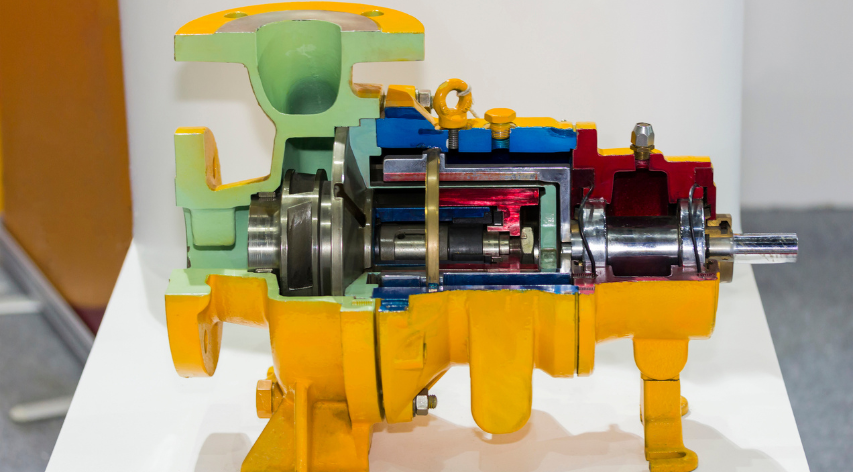Loads on Buried Pipe: A 100-Year Old Empirical Formula Still Holds Water


The evaluation of the effects of surcharge loads on buried pipes can be addressed using the Iowa formula. This formula, over 100 years old, matches the results of state-of-the-art finite element analysis with pipe-soil interaction.
In 1913, Iowa State University professors Marston and Anderson published the results of their experimental work on the resistance of concrete pipes to large surcharge loads (Marston, A., and Anderson, A.O., The Theory of Loads on Pipes in Ditches, and Tests of Cement Clay Drain Tile and Sewer Pipe, Bulletin 31, Iowa Engineering Experiment Station, Iowa State University, Ames, Iowa, 1913). Their experimental work was triggered by the failures that were occurring in the agricultural fields as early tractors were driving over shallow-buried pipes. They developed a simple formula for the ovality of the pipe under surface loads, which has since been known as the Iowa formula.

In 1941 Spangler (also an Iowa State professor) built upon this early work to publish an updated formula that also accounted for the support provided by the soil at the sides of the pipe (Spangler, M.G, 1941.”The Structural Design of Flexible Pipe Culverts”. Iowa Engineering Experiment Station. Bulletin 153. Ames, Iowa). This formula was further updated in 1958 by Watkins, who was one of Spangler’s students (Watkins, Reynold K. and Spangler, M.G. 1958. “Some Characteristics of the Modulus of Passive Resistance of Soil: A Study in Similitude,” Highway Research Board Proceedings,Vol. 37, pp. 576-583.), and is sometimes referred to as “Spangler’s formula”, or the “modified Iowa formula”:

where
Load terms:
K=soil bedding constant (dimensionless empirical value)
P=pressure at the top of the pipe due to soil and surface loads
Pipe stiffness terms:
E=Young’s modulus of pipe material
I=through wall bending moment of inertia of pipe
R=mean radius of pipe
Soil stiffness terms:
E’= Young’s modulus of soil reaction
Note that accurate development of the load terms involves additional calculations, including consideration of the potential for the soil to partially support itself (“arching”). Also, the Young’s modulus of soil reaction (E’) represents the specific condition of the soil around the pipe.
The formula combines engineering principles such as moment of inertia and bending stiffness with empirical factors to account for soil behavior. Empirical factors are needed because while steel pipe is well understood, the mechanics of soil is much more complex as the properties of soil are both nonlinear and anisotropic. Examination of typical values shows that the ovalization is governed by the soil stiffness, not the pipe. Thus, buried pipes exhibit surprisingly high load bearing capacity, as witnessed by the shallow burial of culverts under rural roads.
Spangler and Watkins’ version of the Iowa formula is still in widespread use today, and forms a basis for modern codes and standards, such as ASME Boiler & Pressure Vessel Code Case N‑806, American Water Works Association M11 Steel Pipe: A Guide for Design and Installation, and ASCE American Lifelines Alliance Guidelines for the Design of Buried Steel Pipe. Becht Engineering is involved with ongoing work to develop and implement industry standards for buried pipe, including the development of the American Lifelines Alliance Guidelines for the Design of Buried Steel Pipe , WRC bulletin 425 A Review of Methods for the Analysis of Buried Pressure Piping, and ASME XI Code Case N-806 for the evaluation of buried corroded pipe.
One hundred years later, we can now analyze the effects of these loads numerically, with finite element models representing the pipe and the soil subjected to surface loads. The finite element model results show good agreement with the Iowa formula. One key to success is realistic soil simulation achieved through the use of Drucker-Prager material plasticity models. Drucker-Prager plasticity is specifically designed for modeling of granular materials, where the yield strength is dependent on the hydrostatic pressure. This is especially important for shallow burial depths or relatively high loading, where the nonlinear soil behavior governs.
Two-dimensional (plane strain) models are relatively simple and computationally inexpensive. Planar models share the same considerations as the Iowa formula, where the properties and loads are constant along the length of the pipe.

Two-Dimensional Model – Soil Deflection Contours Under Concentrated and Dead Weight Loading
Full three-dimensional models are capable of evaluating more complex three-dimensional problems beyond the ability of the Iowa formula, such as nonuniform soil properties (e.g. compacted trench fill or bedding) and locally thinned areas (LTAs) in the pipe.

Three-Dimensional Model – Soil Deflection Contours Under Concentrated and Dead Weight Loading
Limited three-dimensional models can be used to validate the more complex three dimensional models by simulating two-dimensional problems with a three-dimensional model.
The analysis of buried pipe is of particular interest when the pipe is degraded or subject to unique loads. Becht Engineering recently performed a series of evaluations for a utility whose facilities have buried pipes that are potentially subject to corrosion. These analyses were performed using a combination of hand calculations and finite element models and covered a wide range of configurations. Becht Engineering provided training for the utility’s staff on the use of the analyses as ready-to-use tools and screening criteria for rapid evaluation of pipe corrosion discovered during field work.
Similar techniques are also used by Becht Engineering in soil-structure-interaction evaluations, which is a more general application of the same principles.
Further details on the history and analysis of buried pipe can be found at the Iowa State University library.
Have a question or would like more information? You may post to this blog or click the link below for more help.






